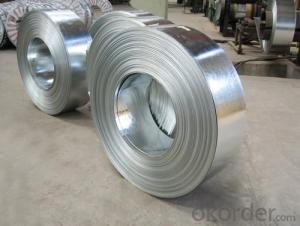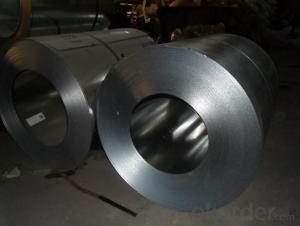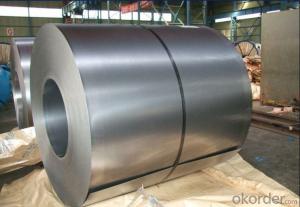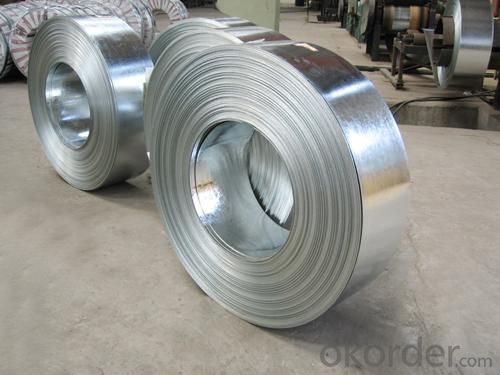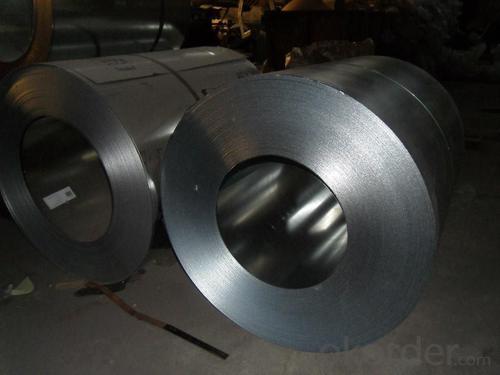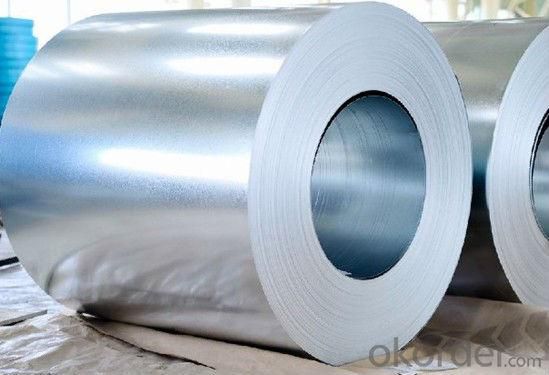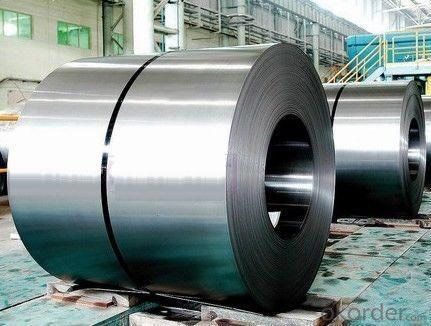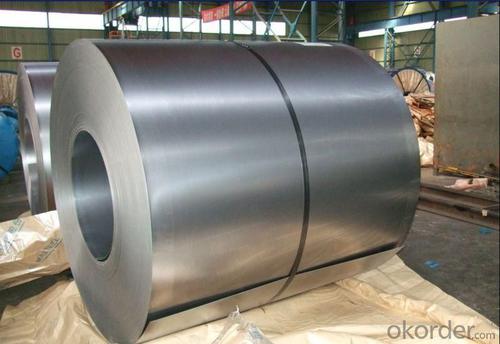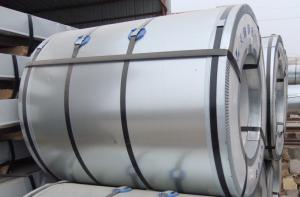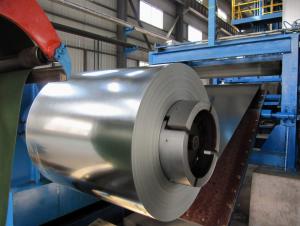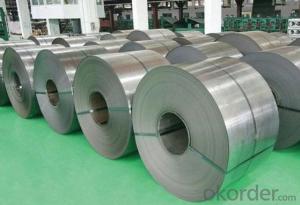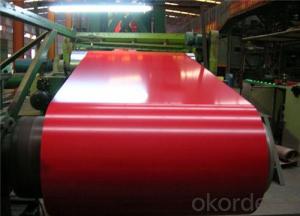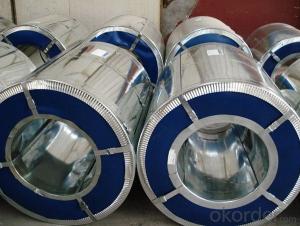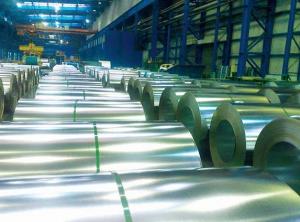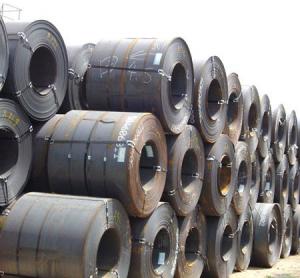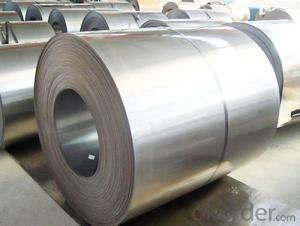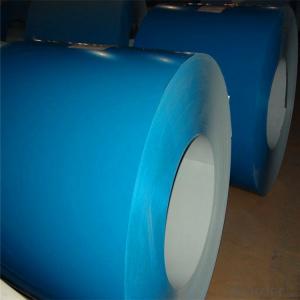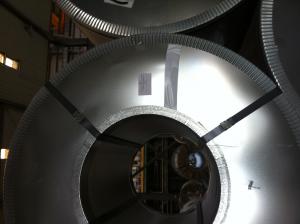ASTM A526 Hot Dipped Galvanized Steel Coil
- Loading Port:
- China main port
- Payment Terms:
- TT OR LC
- Min Order Qty:
- 5 m.t.
- Supply Capability:
- 100000 m.t./month
OKorder Service Pledge
OKorder Financial Service
You Might Also Like
Specification
ASTM A526 Hot Dipped Galvanized Steel Coil
Specifications
1, Thickness: 0.15-2.00mm
2, Width: 900-1250mm
3, Coil Weight: 3-10 ton
Process of galvanized steel coils
Pay off reel → double cut shear → welder-notcher → entry accumulator → pre cleaning section → furnace → hot bridle → zinc pot → air knife → after cooler → water quench → dryer → skin pass mill → dryer → tension leveler → dryer → chemical coater → chemical oven → cooler → exit accumulator → oiler → exit shear → tension reel.
Standard | AISI, ASTM, BS, DIN, GB, JIS, etc |
Grade | SGCC, DX51D, DX53D, DX54D, etc |
Thickness | 0.15-3.0mm |
Width | less than 1500mm |
Inner Diameter | 508/610mm |
Zinc Coating | 60g/m2-180g/m2 |
Coil Weight | 3-8 Tons |
Spangle State | regular spangle, small spangle, big spangle, non-spangle |
Surface Treatment | Chromate, Oil, Lacquer Seal, Phosphating, etc |
STEEL GRADE | CHEMICAL COMPOSITION % | MECHANIC PROPERTY | C.B OF COATING | COATING | |||||||||
C | Si | Mn | S | P | T.S | Y.S | E.L | ||||||
x103 | x103 | x102 | x103 | x103 | Mpa | Mpa | % | d=0 180° | G/M² | ||||
JIS G3302 SGCC | 12 | 30 | 41 | 31 | 21 | 480 | 300 | 13 | OK | Z60-150 | |||
JIS G3302 SGCH | 12 | 10 | 21 | 18 | 8 | 680 | 650 | OK | Z60-150 | ||||
ASTM A653 CS.B | 20 | 30 | 60 | 35 | 30 | 386 | 205~380 | 20 | OK | Z80-275 | |||
DX51D+Z | 29 | 21 | 18 | 1.8 | 11 | 355 | 245 | 38 | OK | Z80-275 | |||
G550 | 20 | 6 | 73 | 5 | 17 | 715 | 654 | 8 | OK | Z80-275 | |||
- Q: Whats the difference in composition? When LTCS is used generally?Whats the temperature range, that these materials can be used? Is there any relation between Killed carbon steel, LTCS, stainless steel, carbon steel(normal)? How to categorise/classify these?Thankyou very much in advance..
- This Site Might Help You. RE: What is the difference between LTCS and Carbon steel? Whats the difference in composition? When LTCS is used generally? Whats the temperature range, that these materials can be used? Is there any relation between Killed carbon steel, LTCS, stainless steel, carbon steel(normal)? How to categorise/classify these? Thankyou very much in advance..
- Q: Can steel coils be used in the production of agricultural equipment?
- Indeed, agricultural equipment production can make use of steel coils. In the manufacturing process, steel coils frequently serve as a fundamental material for various agricultural equipment like plows, planters, harvesters, and tillers. The robustness and endurance of steel render it suitable for demanding agricultural applications. Furthermore, steel coils can be easily molded and shaped into diverse parts and components that are necessary in agricultural machinery. Steel's resistance to corrosion also guarantees that the equipment can withstand severe weather conditions and extend its lifespan. All in all, incorporating steel coils into the production of agricultural equipment aids in ensuring the dependability, durability, and effectiveness of the machinery employed in farming operations.
- Q: What products can we make with steel (eg Steel strip, rod, bar, rail, tube) How are these made? What can we make from these steel products?Can you please make the answers as detailed as possible you can because i really want to know this really well. Thank you.
- Your okorder (they make steel deck and steel joists) There are thousands of other items routinely produced from steel, including rebar, and all the metal in cars, airplanes, and about a million other things.
- Q: What are the common surface defects found in steel coils?
- Some common surface defects found in steel coils include rust, scratches, dents, pits, and mill scale.
- Q: They are showing on tv a special on how the new World Trade Center, building 1, is being built. Focusing on the steel and the guys fitting everything together.Where do builders go to buy all that steel framing? We do not build really tall buildings where I live so most of the steel is cut and welded on the job site. At World Trade Center 1, they seem to get the steel on trucks; already cut and welded.
- Most of the parts are cut, welded, and fabricated indoors in a welding shop at another location. Then they're trucked to the site and simply need to be bolted together. This is made possible through the use of computer aided design and modeling programs, so that parts can be made to fit almost presciently in the field. They buy the steel from steel companies. I couldn't tell you exactly where it comes from, you'd have to ask the contractors themselves.
- Q: What are the key players in the steel coil manufacturing industry?
- The key players in the steel coil manufacturing industry are typically large multinational companies that have significant market share and influence. Some of the prominent players in the industry include: 1. ArcelorMittal: As the world's largest steel producer, ArcelorMittal is a major player in the steel coil manufacturing industry. They operate in more than 60 countries and have a diversified product portfolio. 2. Nippon Steel Corporation: Nippon Steel is a leading Japanese steelmaker and one of the largest steel coil manufacturers globally. They have a strong presence in automotive and construction sectors. 3. POSCO: Based in South Korea, POSCO is a major player in the steel industry, including steel coil manufacturing. They are known for their high-quality products and advanced technology. 4. Baosteel Group Corporation: Baosteel is the largest steelmaker in China and one of the largest globally. They have a wide range of steel products, including steel coils, and are known for their strong research and development capabilities. 5. Thyssenkrupp AG: Thyssenkrupp is a German multinational conglomerate with a significant presence in the steel coil manufacturing industry. They have a diverse product range and focus on innovation and sustainability. 6. United States Steel Corporation: As a leading American steel producer, United States Steel Corporation plays a crucial role in the steel coil manufacturing industry. They have a strong presence in the automotive, construction, and energy sectors. 7. JFE Holdings, Inc.: JFE Holdings is a Japanese steel conglomerate and one of the key players in the steel coil manufacturing industry. They have a wide range of steel products and are known for their quality and customer-oriented approach. These are just a few of the key players in the steel coil manufacturing industry, and there are many other companies that contribute to this sector. The industry is highly competitive, and these companies continuously strive to innovate, improve efficiency, and meet the ever-evolving demands of the market.
- Q: What are the applications of stainless steel coils?
- The unique properties and characteristics of stainless steel coils contribute to their wide range of applications across various industries. Here are some key areas where stainless steel coils are extensively used: 1. In the manufacturing industry, stainless steel coils play a crucial role in producing automotive parts, kitchen appliances, machinery components, and construction materials. The exceptional corrosion resistance and durability of stainless steel make it an ideal choice for these manufacturing applications. 2. The construction industry heavily relies on stainless steel coils for roofing, cladding, structural supports, and reinforcement. Stainless steel's strength, ability to withstand harsh weather conditions, and aesthetic appeal make it a popular choice in architectural designs. 3. The food processing industry commonly utilizes stainless steel coils for equipment like food storage tanks, conveyors, and processing machinery. Stainless steel's hygienic properties, resistance to corrosion, and ease of cleaning make it suitable for maintaining the purity and safety of food products. 4. In the chemical industry, stainless steel coils are extensively used due to their excellent resistance to corrosion from chemicals and harsh environments. They are employed in the production of storage tanks, pipelines, and reactors that handle various chemicals and corrosive substances. 5. The energy sector extensively employs stainless steel coils in power generation, oil and gas exploration, and renewable energy systems. They are used in heat exchangers, turbine components, pipelines, and offshore structures due to their high resistance to corrosion, strength, and longevity. 6. The medical and pharmaceutical industry relies on stainless steel coils for their biocompatibility and resistance to corrosion. Stainless steel coils are used in the production of surgical instruments, medical implants, and medical equipment that require sterilization and durability. 7. The automotive industry utilizes stainless steel coils for various components like exhaust systems, fuel tanks, catalytic converters, and structural parts. Stainless steel's high heat resistance, strength, and resistance to corrosion and oxidation make it suitable for these automotive applications. These examples highlight the extensive range of applications for stainless steel coils. Their versatility, durability, and resistance to corrosion make them indispensable in numerous industries where reliability and longevity are crucial considerations.
- Q: What are common uses for steel coils?
- Steel coils are commonly used in various industries for purposes such as manufacturing automobiles, appliances, construction materials, and metal fabrication. They are also used in the production of pipes, tubes, and structural components, making them a versatile material for a wide range of applications.
- Q: like the steel industry and the effects it had on industrial growth, 10 points!
- The single most important important advance in steel production was learning to accurately control carbon content. This was done through the Bessemer Process in which air was blown through molten iron to burn out impurities and excess carbon. Low carbon iron (wrought iron) could be easily worked into shapes. Medium carbon iron could be cast into useful and durable shapes. High carbon steel could be used for structural uses (beams and girders). Adding alloys such as nickel and silicon could produce very tough steels and steels resistant to rust. Adding vanadium to steel engine parts allowed Ford to produce finely machined engines in huge numbers with existing machinery.
- Q: I am building a robot for Bots IQ. In doing so i have the option of building the the armor of my robot out of titanium or tool steel.. which would be the better option.Brief description of Bots IQ: It is a competition where 2 15lb robots go and attack each other with spinning blades, hammers or whatever is designed.
- Titanium is a significantly stronger and lighter metal, but is also extremely expensive. If you have the option for titanium, go for it.
Send your message to us
ASTM A526 Hot Dipped Galvanized Steel Coil
- Loading Port:
- China main port
- Payment Terms:
- TT OR LC
- Min Order Qty:
- 5 m.t.
- Supply Capability:
- 100000 m.t./month
OKorder Service Pledge
OKorder Financial Service
Similar products
Hot products
Hot Searches
Related keywords
